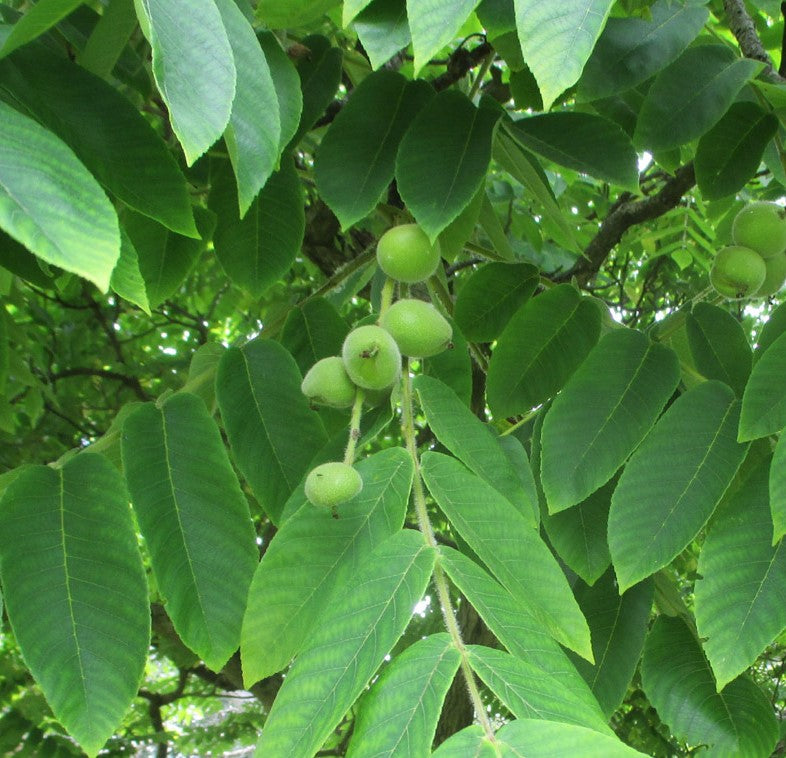1
/
of
1
JUGLANS CINEREA / BUTTERNUT
- Regular price
-
$37.99 CAD - Regular price
-
- Sale price
-
$37.99 CAD
Shipping calculated at checkout.
Couldn't load pickup availability
Delivery Fees
Convenient Delivery to Your Doorstep, Minimum Order $100 and it's on us!
Orders less than $100 will be subject to a $15.00 delivery fee.
- Leaves and Bark: Butternut trees are recognized by their pinnately compound leaves, which typically consist of 11 to 19 leaflets. The leaves are aromatic when crushed and have a fuzzy texture on the undersides. The bark of mature trees is light gray and deeply furrowed, adding to the tree's distinctive appearance.
- Edible Nuts: Butternut trees produce edible nuts that are similar in taste to black walnuts, although they are milder and easier to extract from their shells. These nuts are used in baking, cooking, and eaten raw. Unfortunately, the butternut tree is threatened by a fungal disease known as butternut canker, which has greatly reduced its nut production.
- Wood Quality: The wood of Juglans cinerea is highly valued for its light color and workability. It is used in various woodworking applications, including furniture, cabinets, and carving. The wood is prized for its attractive grain patterns.
- Habitat and Range: Butternut trees are typically found in hardwood forests, particularly in moist, well-drained soils along riverbanks and in valleys. Their range extends from eastern Canada to the southeastern United States. Unfortunately, the butternut tree is facing population decline due to the spread of butternut canker disease.
- Ecological Importance: Butternut trees play an important role in forest ecosystems by providing food for wildlife, including squirrels, chipmunks, and birds. The nuts are an essential source of nutrition for these animals. Additionally, the trees contribute to the overall biodiversity of hardwood forests.
- BLOOM TIME: MAY TO JUNE
- SPREAD 12-18 M
- HEIGHT 12-18 M
- NATIVE TO ONTARIO
Care Instructions
Different plants have different watering needs. Check the soil moisture by inserting your finger about an inch into the soil. If it feels dry, water the plant until the water drains from the bottom of the pot. Avoid overwatering, as it can lead to root rot.


JUGLANS CINEREA / BUTTERNUT
- Regular price
-
$37.99 CAD - Regular price
-
- Sale price
-
$37.99 CAD
SALE
All Echinacea & Monarda, Buy 4 get 1 Free! No code required


